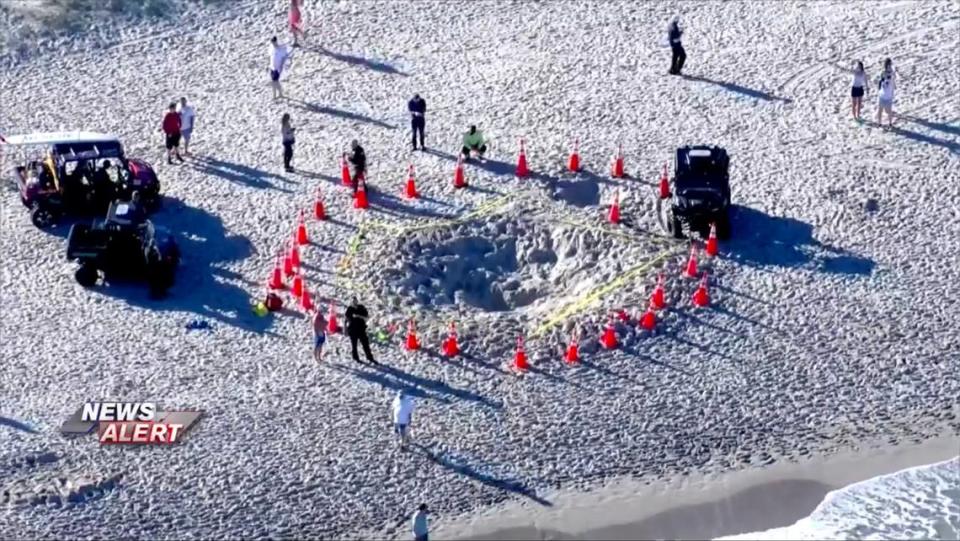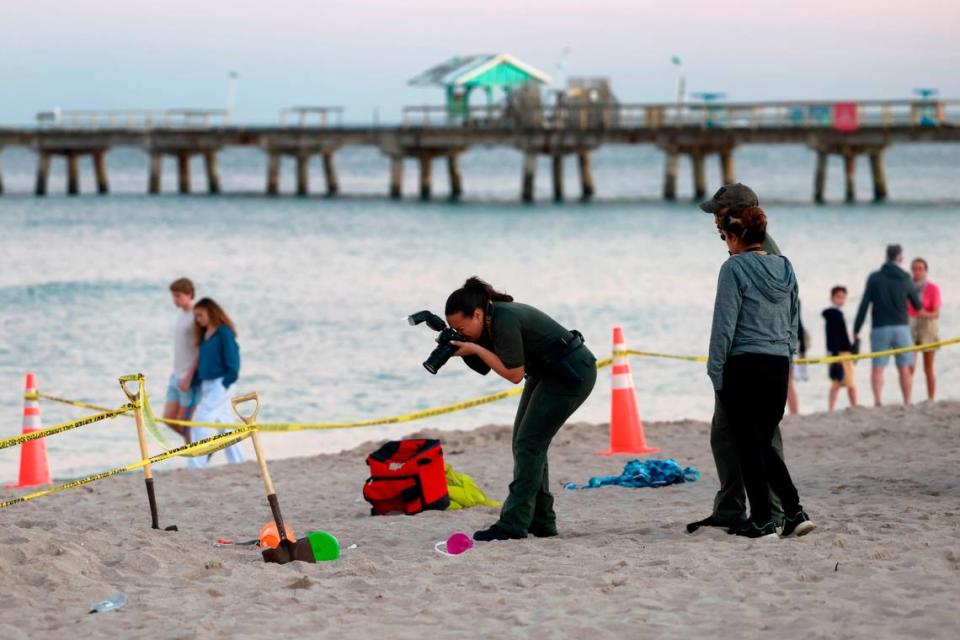A girl buried by sand died at a Florida beach. It occurs more than people realize
A 7-year-old girl died Tuesday after sand from a deep hole she was digging with her brother at the beach in Lauderdale-by-the-Sea collapsed in on them both. Her brother was pulled out alive, but was hospitalized.
The tragedy that befell the family visiting South Florida from Indiana made international headlines given what seems like the freak nature of the accident. But, according to those who make their living saving lives at the beach, such incidents aren’t as uncommon as people may realize.
Digging deep holes in the sand is dangerous, and as Tuesday’s incident shows, potentially deadly.
“This happens, once, twice, three times a year, and it’s preventable,” said Tom Gill, vice president of the United States Lifesaving Association, a nonprofit organization for professional ocean lifeguards.
READ MORE: BSO identifies children in Lauderdale-by-the-Sea beach sand hole collapse

The average beach goer is more afraid of being killed by a shark in the ocean, but that remains an extremely rare risk, according to marine experts. But, dying in a hole from quickly cascading fine grains of sand is statistically an equal, albeit, more avoidable, danger, according to published research.
“It’s about what you should not do,” Gill said. “You should not dig deep holes in the sand.”
In 2023, there were 36 recorded unprovoked shark attacks in the United States, but only two were fatal — and most of the others were minor bites, according to the Florida Museum of Natural History’s International Shark Attack File.
While exact data on how many fatal collapses occur as a result of holes dug at the beach is hard to come by, some research shows the number of people killed nationally by sharks is about on par with those killed after being trapped in sand holes dug out at the beach.
Harvard study shows dangers of dry sand holes
A study done by a Harvard Medical School researcher published in the New England Journal of Medicine in 2007 detailed 52 cases over a 10-year period where people were buried by a collapsing dry-sand hole that had been dug out, 31 of those ending fatally. The victims ranged in age from 3 to 21 years, the study found, and the holes were generally 2 to 12 feet deep, and 2 to 15 feet in diameter.
More recently, similar tragedies as happened in Lauderdale-by-the-Sea impacted families in other parts of the country.

In May, a 17-year-old boy from Chesapeake, Virginia, was killed while digging a hole at the side of a sand dune at a beach in the Outer Banks of North Carolina. An adjacent dune collapsed into the hole he was trapped in, the AP reported.
A year earlier, an 18-year-old man from Maine died while digging an 8- to-10-feet hole with his sister on the beach in Tom’s River, New Jersey.
Sand unstable
A hole dug in the beach is highly unstable. Once the sand starts spilling in a deep hole, there’s little to nothing to do to stop it from filling in. And, when the person becomes trapped, getting them out alive is a race against time and the engineering of a rapidly suffocating environment.
“The bigger the hole, exponentially, the greater the danger,” Gill said.
As Tuesday’s incident demonstrated, it doesn’t matter how many people frantically try to dig the trapped person out. It’s often too late. It takes experts who know how to to pull sand out properly, with the right equipment, to remove a person from the deluge of overwhelming grains.
“There’s nothing to keep the sand from building up all around you, and the pressure, it ultimately can kill you,” Gill said.
This is not to say people, especially children, shouldn’t play in the sand, and even dig holes. But, there’s a protocol lifeguards go by when talking to people on the beach, Gill said: Never dig deeper than the height of the knee of the youngest person in your group.
“Sand is not stable. Ever,” he said.

